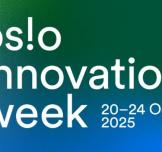You are here
The Disruptive Innovation Right Under Your Nose

Your greatest innovation opportunity may be right in front of you. The problem is you don’t see it. Every day for the last decade of your life this problem has annoyed and frustrated you. Its solution is worth billions of dollars and would open up a totally new market. The problem is, like the millions of other people who have this problem, you don’t think of it as a problem anymore. You’ve been desensitized. You’ve lost your ability to innovate because of something called habituation.
Habituation
In scientific terms, habituation is the process of becoming desensitized or unresponsive to non-threatening stimulus because of repeated exposure to it. That annoying mark on the wall that you stopped seeing; habituation. That annoying clock tick-tocking in the background that you don’t hear; habituation. That horrible odor your colleague left behind that you no longer notice; habituation. That billion dollar frustration which you could easily solve but no longer notice; habituation.
Habituation is an amazing form of learning. It has been shown in essentially every species of animal. So it must be essential to every species’ survival and have arrived early in the evolutionary game. It allows us to save energy and reduce stress by not wasting full-blooded survival antics in the face of a gust of wind. It also plays a role in less life threatening things such as when you’re eating, giving you the feeling of being full when you’re not.
For companies and individual it is a bane. It stops us from noticing those itches which are worth a fortune. If you could turn off this learning process, then all of a sudden you would notice all the things people tolerate because they have learned to ignore them. However, if you were to draw their attention to it, they would notice the annoyance and gladly pay for your solution. A lack of habituation is a catalyst for game-changing innovations.
One might object that in companies it’s usually not finding an idea that is a problem but the execution. However, for the real innovators in us, sometimes we’d like a way to find new disruptive ideas and not just incremental ones. It is the recognition of everyday frustrations that can lead to that. In fact, one of such inconvenience seems so obvious you could imagine the ancient Greeks using it, if they had noticed it.
Indeed, you use them every day to open almost every door you encounter which doesn’t open automatically; doorknobs. Such an obvious convenience should have been around forever, however, this is not the case. They first started assisting people’s door problems in the late 19th century when Osbourn Dorsey invented such a mechanism. He then filed and later received a patent for the first doorknob device which we now recognize. Up until that point, many people probably thought doors were a necessary challenge with the large heavy latches commonly seen on gates nowadays.
Dishabituation
The upshot is we need a way to dishabituate us so that we can see the simple game-changing innovations such as doorknobs. We need a way for annoying things to become annoying again. But how do we do this?
Luckily researchers have been asking exactly this question for decades too. In the meantime they have discovered many practical ways to intensify your innovation itch. What’s more they’re extremely easy to do and some of them are even enjoyable!
The first and probably most well-known is to change the context. This means dramatically changing the way we look at our surroundings. Redecorate, refurnish, take away and add back things. By doing so, a situation becomes new to us and so we notice everything about it again. As you do this, try and notice all the frustrations.
The next one is something you have probably been told a thousand times. Be a good listener. Next time someone complains, listen and ask yourself what you can do about it. The visitor who is not used to your annoying way of opening doors (maybe because he/she doesn’t have any) may have a good point. In this context, complaints can be one of the greatest sources of innovation.
The final one I’ll address here is changing your point of view on life. Get out of your everyday rut and experience something totally different. Travel overseas and outside your time and comfort zone! When you come back, not only will everything be new to you again but you’ll hopefully have altered your perspective too. Seeing how others live their life and cope with their problems can be an extremely powerful innovation kick.
Learn to notice serious innovation opportunities
Each of the suggestions presented here is relatively simple for most people to do but are three of hundreds of ways of exposing one to life’s endured frustrations. They won’t open your eyes to every frustration but should provide one with impetus to thinking about ways you can learn to notice serious innovation opportunities.
You may now rightfully ask, what was the doorknob inventor’s dishabituation trick? There must have been thousands of people who were annoyed by the cumbersome latch and similar devices. We can’t be sure but it could have been cultural and due to Osbourn Dorsey’s background as an African-American. This may have helped him not accept the status quo and notice the frustrating door opening mechanisms in place and decide there must be a better way.
Starting the desensitization cycle may make evolutionary sense but it may also be blocking you from seeing your next big opportunity. For some innovative ideas, saying it’s right in front of your eyes seems to be quite apt, it just may require you to look twice at what’s really there.
Image credit: Max Pfandl, Flickr


































































EgyptInnovate site is not responsible for the content of the comments